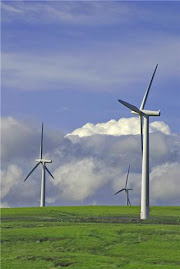Saturday, June 27, 2009
Landfills and Trash
Recycling, recycling is an easy way to help the environment. First check with your city if the recycling program is available. If not when there are town meetings its a good idea to bring it up. With recycling most towns offer a plant the allows plastic, paper, cardboard and metals.
Composting is a little trickier but still manageable. Once again make sure your city has a composting program. If so, you should have a green bin where you can place any food and tissues in.
Recycling and compost may seem like its not that much. If every one recycled and composted, our landfills would be less then half there size they are today. So whats stopping you?
How to drive greener
Tip #1 - Start by taking it easy, no need for the jackrabbit starts or the aggressive braking. Just one second of full throttle is equal to 20 minutes of normal driving.
Tip #2 - Look down the road to see whats coming up. By doing this you can avoid hard braking.
Tip #3 - This tip applies to those who have manual transmissions. Don't let the engine rev, shift up earlier and your engine will burn less fuel.
Tip # 4 - Steer away from congested areas which will result in burning more fuel from idling. Instead of drive through, go into the restaurant and order - you'll get exercise and help the environment.
Tip # 5 - Turn of those unnecessary accessories like a/c, heated seats and items that plug in.
Now that you know a little more, show the environment how much you've learned by applying these tips as much as you can!
Thursday, June 25, 2009
5 Tips To Becoming Greener
Tip 1 - Place native plants in your front and back yard. The native plants thrive on less water and less use of herbicides and pesticides.
Tip 2 – Replace old style windows with new energy efficient thermal panes. Also use blinds during the day to keep out sun and help keep your home cool.
Tip 3 - New fridge and freezer. Over the past 30 years, fridges and freezers have become three times more efficient.
Tip 4 - New toilets and shower nozzles will help cut down on water bills and help prevent more water pollution. Tip 5 - Plant trees. Trees will help with shade and will make your home cooler. In the winter, they will also shield your home from cold wind. But their biggest advantage is the way they help the environment. Each tree filters 60 lbs of pollutants a year and gives off oxygen in return.
Wednesday, June 24, 2009
CFL Lighting
Incandescent Watts - CFL Watt range - Lumen Range
40, 8 – 10, 450
60, 13 – 18, 890
75, 18 – 22, 1210
100, 23 – 28, 1750
150, 34 – 22, 2780
Thursday, June 18, 2009
What is a Rain Barrel?
Most rain barrels run by gravity. Although, sometimes, you might need an extra pump to help the water move though the pipes/tubes. One of the most attractive things about using rain barrels to be greener is the low cost. A good rain barrel will set you back about $39.99, or as high as a couple hundred dollars - but the cheap ones are just as good as the pricier ones. Granted, the more you pay, the better the quality – also, larger barrels tend to cost more.
Wednesday, June 17, 2009
How Does a Wind Generator Work?
There is one downside to wind turbines though: As the wind blows, it produces noise. Fortunately, now, there are other types of wind turbines that produce little or no noise.
And don't forget - if you go away for a weekend or you don't use all the power the turbine produces, you can always sell it back to the grid!
Monday, June 15, 2009
Is Becoming Green Worth It?
Green you say? Yes green. Just add all those bills up over time, and you'll quickly see that the savings accumulate fast. Lets say your bill for hydro and water for the month is around $200. Add that up over 10 years and that is $24,000. Just think: you could have bought a good wind generator for $3,000 (tax included), a solar powered water heater for $2,000, and a rain barrel for your water supply for $40 - $80. Also, remember if you aren't using all the energy from the wind generator/solar cells, you can sell it back to the grid (power company) to earn some extra cash. So it's up to you. Would you rather pay monthly bills for the rest of your life, contributing towards the destruction of the planet, or would you like to live green and help repair our earth?
The best part is that even if it takes you a few years to pay back the money, it will keep paying for itself for many years to come.
